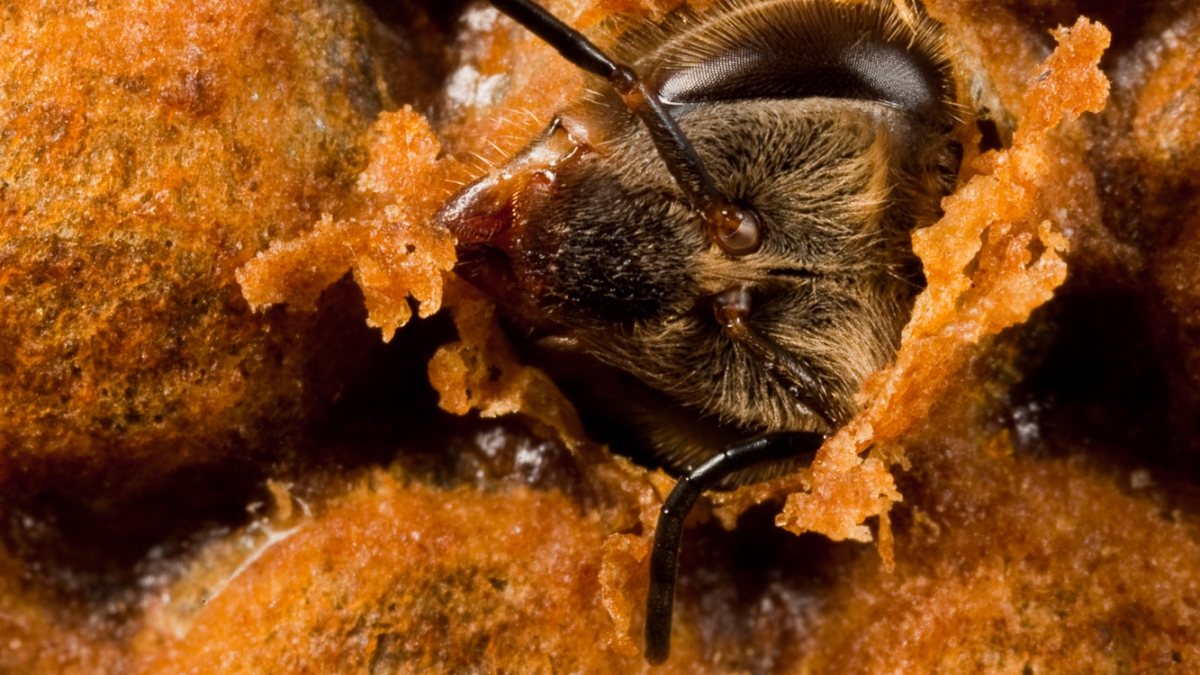Bee research sheds light on human sweet perception, metabolic disorders

Scientists at Arizona State University have discovered that honey bees may teach us about basic connections between taste perception and metabolic disorders in humans.
By experimenting with honey bee genetics, researchers have identified connections between sugar sensitivity, diabetic physiology and carbohydrate metabolism. Bees and humans may partially share these connections.
In a study published in the open-access journal PLoS Genetics (Public Library of Science), Gro Amdam, an associate professor, and Ying Wang, a research scientist, in the School of Life Sciences in ASU’s College of Liberal Arts and Sciences, explain how for the first time, they’ve successfully inactivated two genes in the bees’ “master regulator” module that controls food-related behaviors. By doing so, researchers discovered a possible molecular link between sweet taste perception and the state of internal energy.
“A bee’s sensitivity to sugar reveals her attitude towards food, how old the bee is when she starts searching for nectar and pollen, and which kind of food she prefers to collect,” said Wang, the lead author of the paper. “By suppressing these two ‘master’ genes, we discovered that bees can become more sensitive to sweet taste. But interestingly, those bees also had very high blood sugar levels, and low levels of insulin, much like people who have Type 1 diabetes.”
In Amdam’s honey bee lab at ASU, scientists suppressed two genes including vitellogenin, which is similar to a human gene called apolipoprotein B, and ultraspiracle, which partners with an insect hormone that has some functions in common with the human thyroid hormone. The team is the first in the world to accomplish this double gene-suppressing technique. Researchers used this method to understand how the master regulator works.
“Now, if one can use the bees to understand how taste perception and metabolic syndromes are connected, it’s a very useful tool,” said Amdam, who also has a honey bee laboratory at the Norwegian University of Life Sciences. “Most of what we know about deficits in human perceptions is from people who are very sick or have had a brain trauma. We know shockingly little about people in this area.”
The researchers are now considering how, exactly, the bees’ sweet taste was enhanced by the experiment. The most metabolically active tissue of the bee, called the fat body, may hold the key. The fat body is similar to the liver and abdominal fat in humans, in that it helps store nutrients and create energy.
Amdam explains that taste perception evolved as a survival mechanism, for bees as well as for people. For example, bitter foods may be poisonous or sweet taste may signal foods rich in calories for energy. For all animals, taste perception must communicate properly with one’s internal energetic state to control food intake and maintain normal life functions. Without this, poorly functioning taste perception can contribute to unhealthy eating behaviors and metabolic diseases, such as diabetes and obesity.
“From this study, we realized we can take advantage of honey bees in understanding how food-related behaviors interact with internal metabolism, as well as how to manipulate these food-related behaviors in order to control metabolic disorders,” added Amdam.
In addition to Amdam and Wang, the team included former ASU research partners Colin Brent, a research entomologist with the USDA, and Erin Fennern, now with Oregon Health Science University.

